Abstract
Nine patients with severe sepsis were studied to determine causes for any alterations in oxygen dissociation. Seven of the patients had oxyhemoglobin curves shifted to the left of expected and diminished DPG levels. These deficiences were not corrected in one case. The other eight patients survived or expired with normal to elevated P50T and DPG levels. In this study, three factors occurring either individually, in concordance, or in sequence were present when P50T was decreased. Correction of these deficiencies lead to normalization and, in one case, exceedingly high P50T and DPG levels. Where hypophosphatemia, acidosis, and transfusion of DPG deficient blood were avoided, no such change occurred. Hypophosphatemia is a common occurrence in the seriously ill patient whether or not hyperalimentation is used and may occur in spite of phosphate supplementation. Blood transfusions with CPD as the preservative are effective in reducing the severity of this disorder by the addition of an inorganic phosphate load. Septic shock itself had no untoward effect on oxygen dissociation. This held true even in the terminal stages of the disease process.
Full text
PDF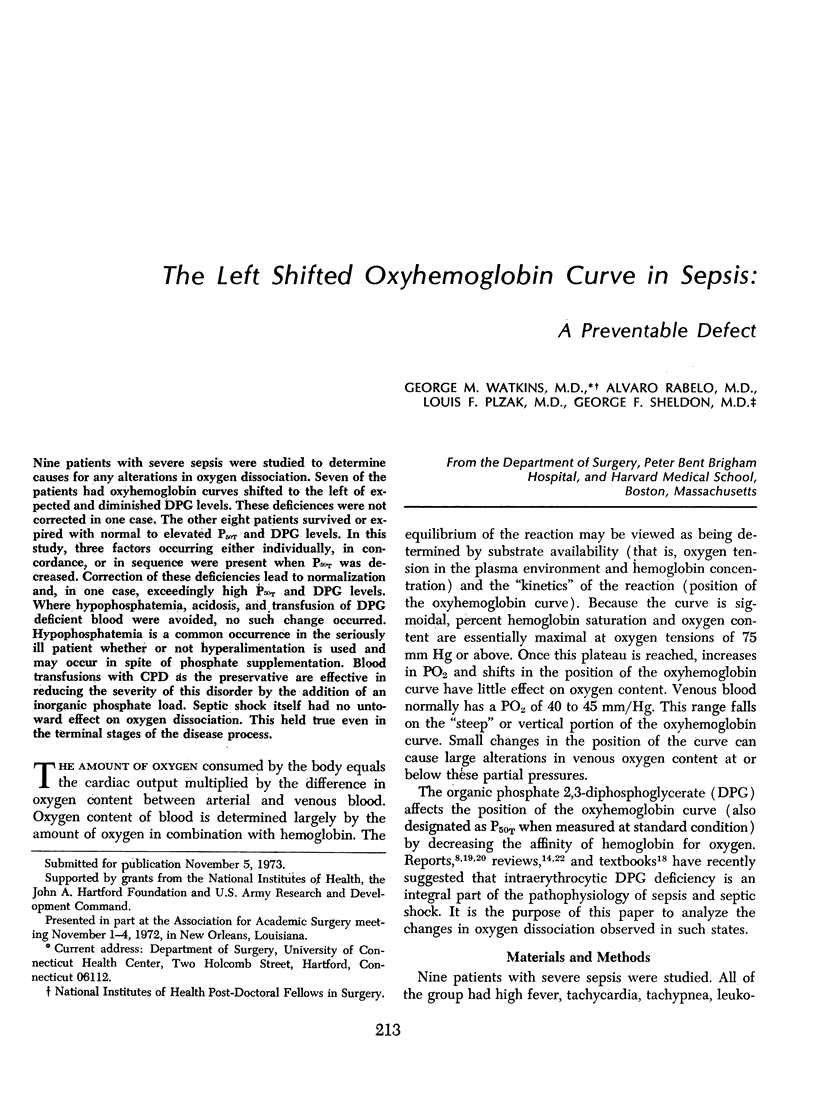
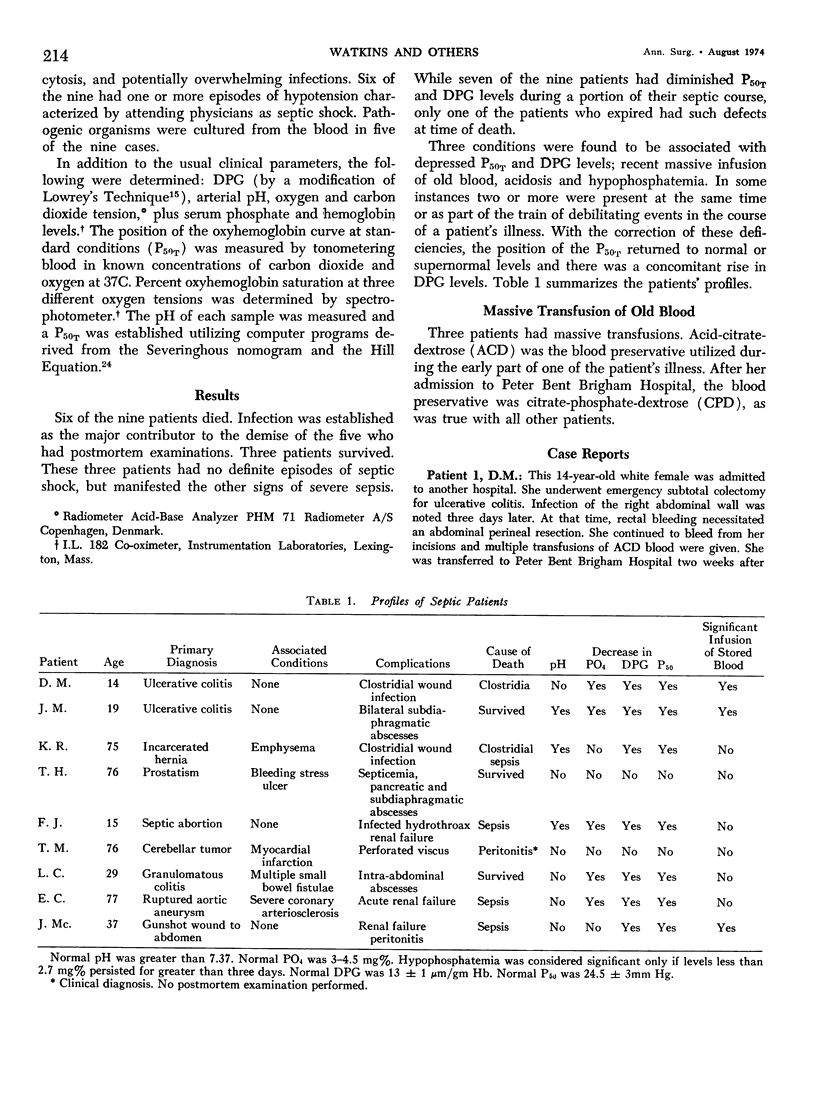
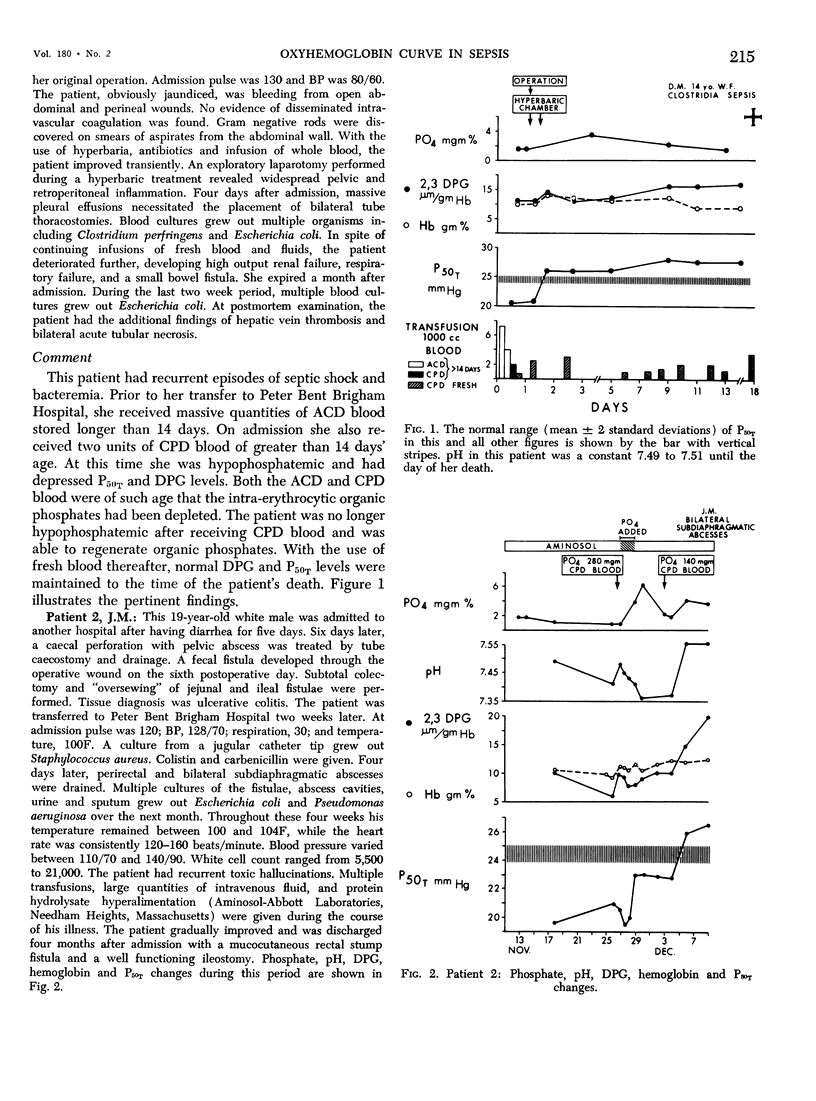
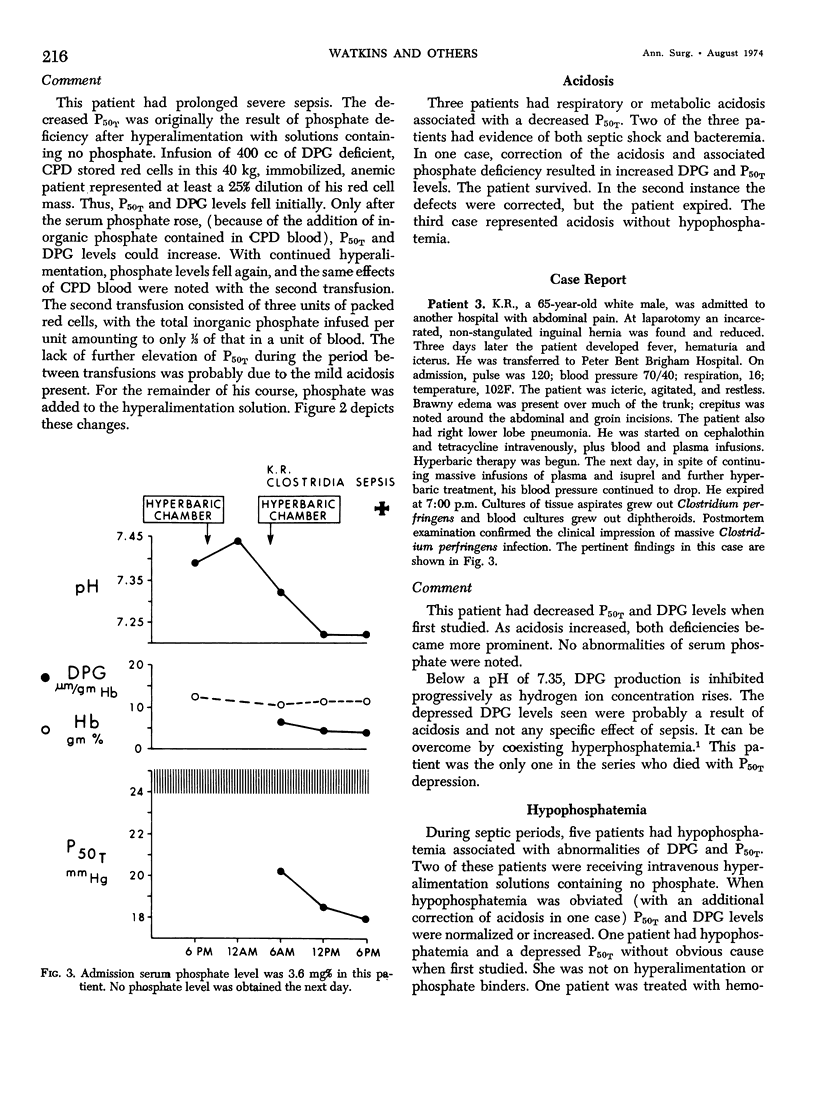
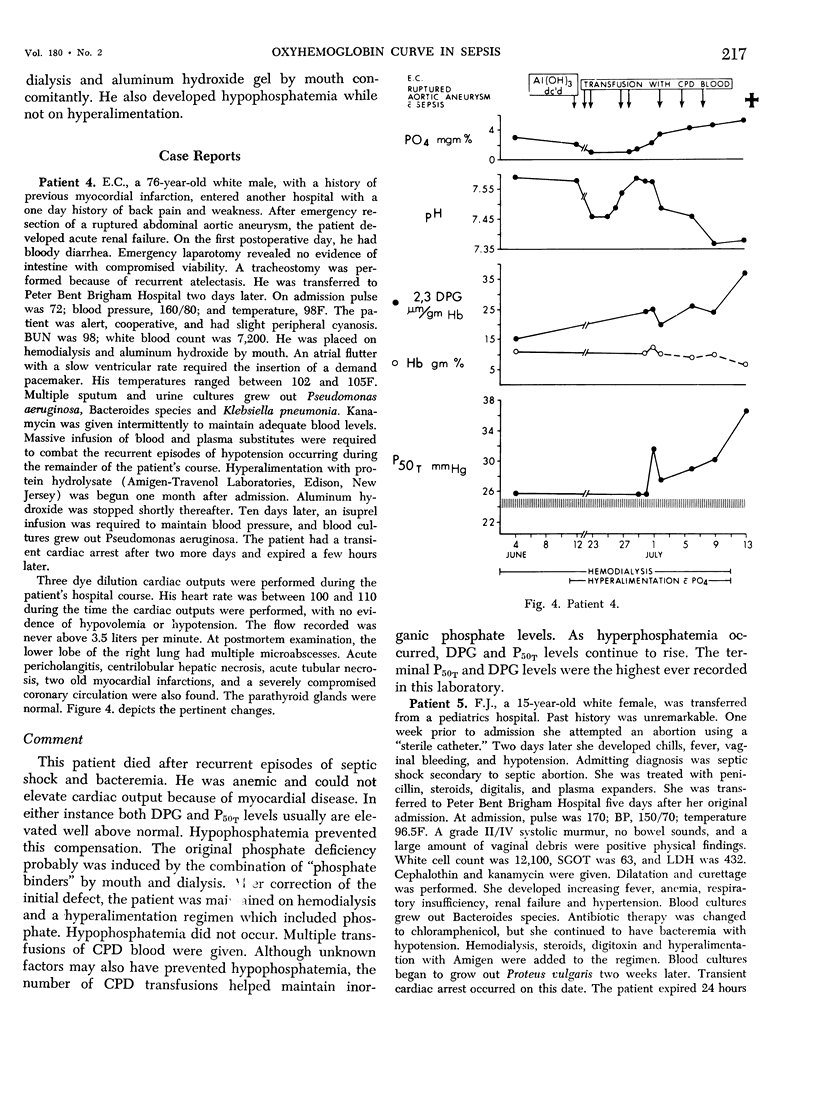
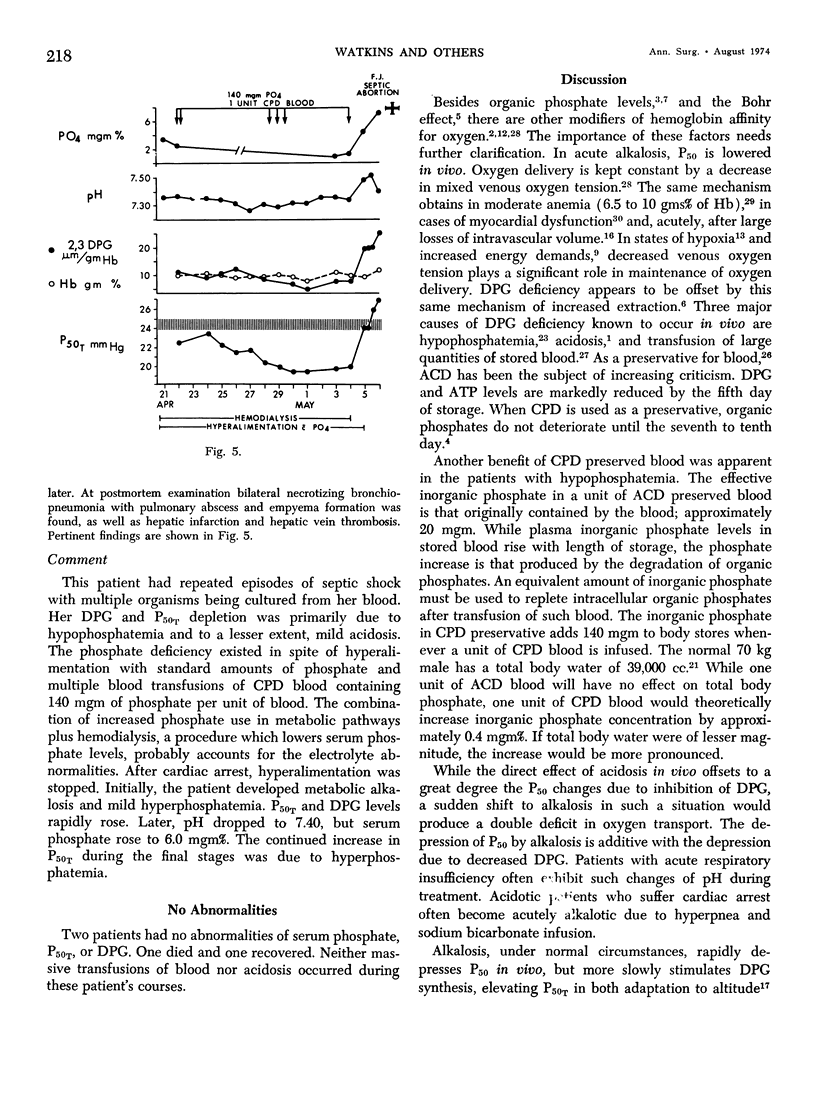
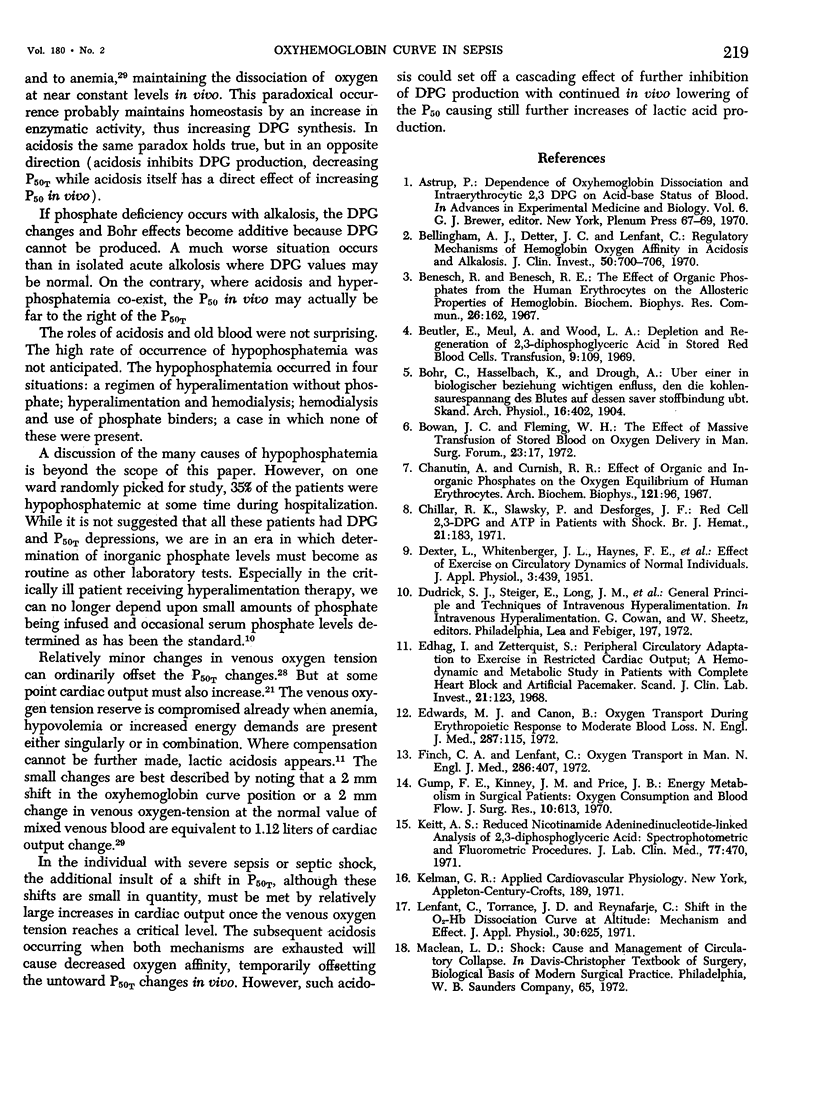
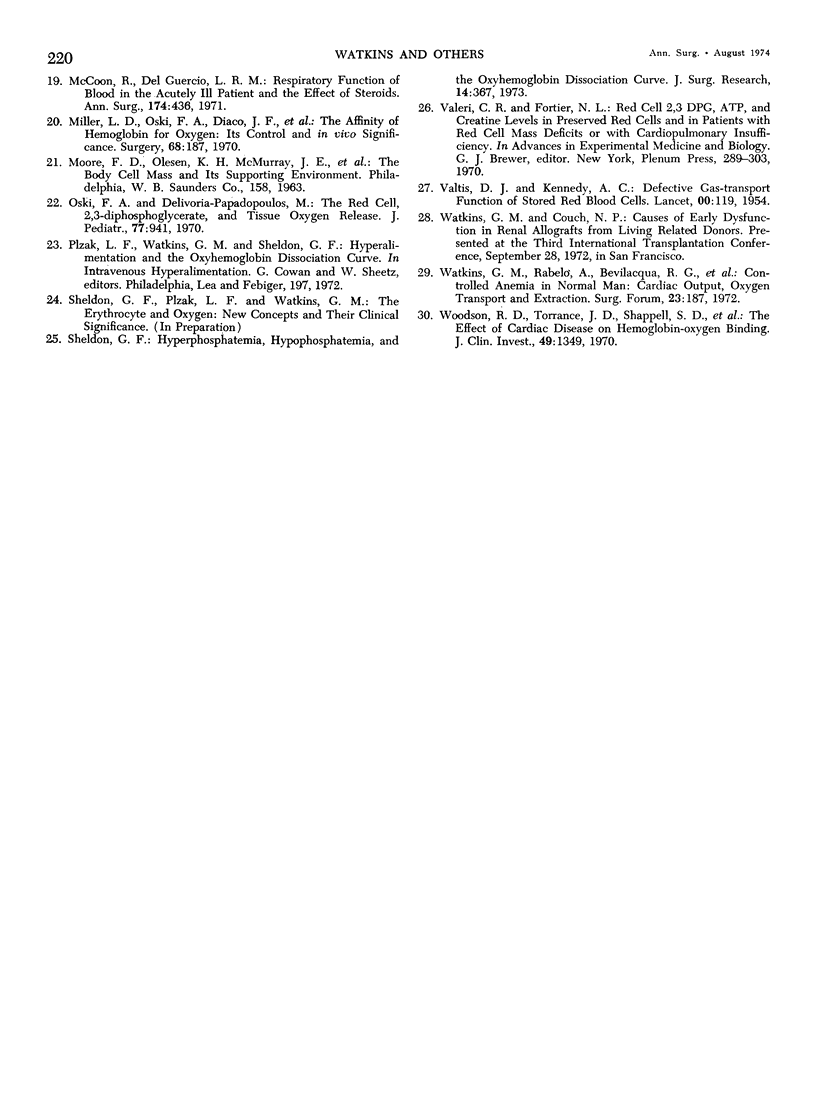
Selected References
These references are in PubMed. This may not be the complete list of references from this article.
- Bellingham A. J., Detter J. C., Lenfant C. Regulatory mechanisms of hemoglobin oxygen affinity in acidosis and alkalosis. J Clin Invest. 1971 Mar;50(3):700–706. doi: 10.1172/JCI106540. [DOI] [PMC free article] [PubMed] [Google Scholar]
- Benesch R., Benesch R. E. The effect of organic phosphates from the human erythrocyte on the allosteric properties of hemoglobin. Biochem Biophys Res Commun. 1967 Jan 23;26(2):162–167. doi: 10.1016/0006-291x(67)90228-8. [DOI] [PubMed] [Google Scholar]
- Beutler E., Meul A., Wood L. A. Depletion and regeneration of 2,3-diphosphoglyceric acid in stored red blood cells. Transfusion. 1969 May-Jun;9(3):109–115. doi: 10.1111/j.1537-2995.1969.tb05527.x. [DOI] [PubMed] [Google Scholar]
- Bowen J. C., Fleming W. H. Effect of massive transfusion of stored blood on oxygen delivery in man. Surg Forum. 1972;23(0):17–19. [PubMed] [Google Scholar]
- Chanutin A., Curnish R. R. Effect of organic and inorganic phosphates on the oxygen equilibrium of human erythrocytes. Arch Biochem Biophys. 1967 Jul;121(1):96–102. doi: 10.1016/0003-9861(67)90013-6. [DOI] [PubMed] [Google Scholar]
- Chillar R. K., Slawsky P., Desforges J. F. Red cell 2,3-diphosphoglycerate and adenosine triphosphate in patients with shock. Br J Haematol. 1971 Aug;21(2):183–188. doi: 10.1111/j.1365-2141.1971.tb03428.x. [DOI] [PubMed] [Google Scholar]
- DEXTER L., WHITTENBERGER J. L., HAYNES F. W., GOODALE W. T., GORLIN R., SAWYER C. G. Effect of exercise on circulatory dynamics of normal individuals. J Appl Physiol. 1951 Feb;3(8):439–453. doi: 10.1152/jappl.1951.3.8.439. [DOI] [PubMed] [Google Scholar]
- Edhag O., Zetterquist S. Peripheral circulatory adaptation to exercise in restricted cardiac output. A hemodynamic and metabolic study in patients with complete heart block and artificial pacemaker. Scand J Clin Lab Invest. 1968;21(2):123–135. doi: 10.3109/00365516809084274. [DOI] [PubMed] [Google Scholar]
- Edwards M. J., Canon B. Oxygen transport during erythropoietic response to moderate blood loss. N Engl J Med. 1972 Jul 20;287(3):115–119. doi: 10.1056/NEJM197207202870303. [DOI] [PubMed] [Google Scholar]
- Finch C. A., Lenfant C. Oxygen transport in man. N Engl J Med. 1972 Feb 24;286(8):407–415. doi: 10.1056/NEJM197202242860806. [DOI] [PubMed] [Google Scholar]
- Gump F. E., Kinney J. M., Price J. B., Jr Energy metabolism in surgical patients: oxygen consumption and blood flow. J Surg Res. 1970 Dec;10(12):613–627. doi: 10.1016/0022-4804(70)90090-9. [DOI] [PubMed] [Google Scholar]
- Keitt A. S. Reduced nicotinamide adenine dinucleotide-linked analysis of 2,3-diphosphoglyceric acid: spectrophotometric and fluorometric procedures. J Lab Clin Med. 1971 Mar;77(3):470–475. [PubMed] [Google Scholar]
- Lenfant C., Torrance J. D., Reynafarje C. Shift of the O2-Hb dissociation curve at altitude: mechanism and effect. J Appl Physiol. 1971 May;30(5):625–631. doi: 10.1152/jappl.1971.30.5.625. [DOI] [PubMed] [Google Scholar]
- McConn R., Del Guercio L. R. Respiratory function of blood in the acutely ill patient and the effect of steroids. Ann Surg. 1971 Sep;174(3):436–450. doi: 10.1097/00000658-197109000-00013. [DOI] [PMC free article] [PubMed] [Google Scholar]
- Miller L. D., Oski F. A., Diaco J. F., Sugerman H. J., Gottlieb A. J., Davidson D., Delivoria-Papadopoulos M. The affinity of hemoglobin for oxygen: its control and in vivo significance. Surgery. 1970 Jul;68(1):187–195. [PubMed] [Google Scholar]
- Oski F. A., Delivoria-Papadopoulos M. The red cell, 2,3-diphosphoglycerate, and tissue oxygen release. J Pediatr. 1970 Dec;77(6):941–956. doi: 10.1016/s0022-3476(70)80076-2. [DOI] [PubMed] [Google Scholar]
- VALTIS D. J. Defective gas-transport function of stored red blood-cells. Lancet. 1954 Jan 16;266(6803):119–124. doi: 10.1016/s0140-6736(54)90978-2. [DOI] [PubMed] [Google Scholar]
- Watkins G. M., Rabelo A., Jr, Bevilacqua R. G., Brennan M. F., Kagey K. S., Anderson W. P., Sheldon G. F., Moore F. D. Controlled anemia in normal man: cardiac output, oxygen transport and extraction. Surg Forum. 1972;23(0):187–189. [PubMed] [Google Scholar]
- Woodson R. D., Torrance J. D., Shappell S. D., Lenfant C. The effect of cardiac disease on hemoglobin-oxygen binding. J Clin Invest. 1970 Jul;49(7):1349–1356. doi: 10.1172/JCI106351. [DOI] [PMC free article] [PubMed] [Google Scholar]


